There’s so much more going on across the Network than first meets the eye. The National Cycle Network is teeming with life – you just need to know where to look. Take a closer peek with us at the abundance of wildlife, fungi and flora you can discover next time you’re walking, wheeling or cycling on its paths.
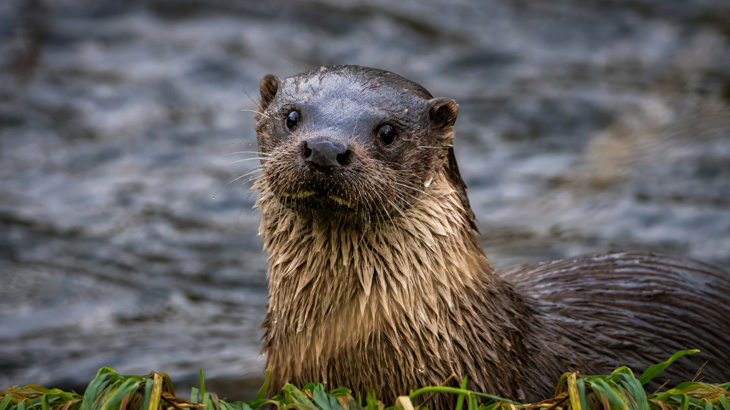
You may be able to see otters along the river on Route 5 at dawn or dusk. Credit: Jonny Gios on Unsplash
The rare small blue butterfly – The Lias Line, Route 41
Running from Rugby to Leamington, the Lias Line is an excellent route for butterfly lovers.
The chalky grassland along the path supports rare species in the county, such as the dingy and the grizzled skipper.
You’ll also find a nationally scarce small blue butterfly here.
The small blue, the smallest butterfly in the UK, is not very blue at all. It actually has more of a dusky, often brownish or grey, tinge.
They are mostly spotted from May to August, and they love setting up homes in grassy areas.
Sustrans is working with Butterfly Conservation to restore and improve calcareous grasslands on the Lias Line, home to 22% of Warwickshire's small blue butterfly colonies.
If you were to pop along at night in the June and July months you may also be lucky enough to spot the magical sight of glow worms glimmering away in an attempt to attract a mate.
Birds and fungi – Holkham National Nature Reserve, Route 1
If you’re a wildlife lover, this route should be at the top of your list.
Starting in the back lanes of North Norfolk, you pass through the sweeping estate of Holkham Hall, home to fallow deer roam freely about the 677-acre deer park.
The route continues along the grazing marsh and pine woodlands within the Holkham National Nature Reserve as you travel towards Wells-next-the-Sea.
You’ll find a wealth of wildlife within the reserve no matter the season.
In the winter, tens of thousands of geese and widgeon feed on the fresh marsh, and the sky fills with noisy skeins of geese at dusk as they head off to roost.
Barn owls and marsh harriers hunt over the marsh all year round, and there are majestic spoonbills to spot in the water too.
Whilst passing through, it would be tricky to resist taking a rest at the Lookout Cafe before heading out to the beach.
To get over to the sands, you cross pine woods bursting with brightly coloured fungi in the autumn.
Then you’ll pass dune slacks where the botanists among you could get lost for hours – and you may even see a natterjack toad in the pools in between.
You’ll then emerge onto a strip of salt marsh, turning glorious shades of red and purple from the glasswort plants and sea lavender.
Keep your eyes peeled for shore lark and snow buntings if you're there in winter.
Here you reach a sandy beach stretching for miles where you can dip in the North Sea, if you’re feeling brave.
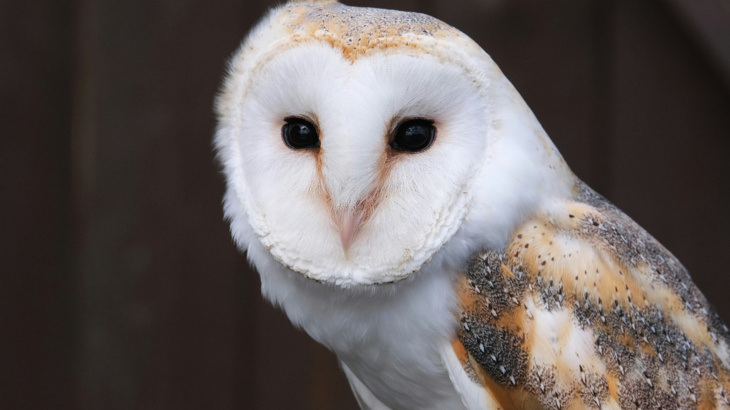
A barn owls swoop around Holkham National Nature Reserve on Route 1 of the Network. Credit: Rory Tucker on Unsplash
Osprey and other birds – The Mawddach trail, Route 8
The Mawddach Trail goes over the Barmouth Bridge from Abermaw and follows the Mawddach Estuary through Welsh woodlands.
Here, across the sweeping estuary, you may catch glimpses of ospreys hunting and resting whilst curlews and oystercatchers call out from the salt marsh.
In the summer, you can spot spotted flycatchers and hear wood warblers in the woodlands.
Help us record wildlife on the Network
Support your local wildlife by recording the different animals you spot on your nearby National Cycle Network paths. This will help us better understand the species living there and carry out conservation work to support them.
Adders, lizards, butterflies and more – Wyre Forest, Route 45
If you’re not too daunted by coming across a slithery friend, then the ancient Wyre Forest is well worth exploring.
Route 45 takes you through the heart of the forest, where many rare butterflies, such as the pearl-bordered fritillary, can be found. These emerge as early as April and have a distinctive orange and black ‘pearl’ pattern on their wings.
As you pass through, you may also see white admirals or wood-white butterflies, both rare and sadly declining in population.
At the river crossings, pause to check for a dipper bird bobbing in and out of the water or the blue flash of a kingfisher as it zooms past.
In the clearings, if you are very lucky (some may disagree), you might see an adder in the heathlands or lizards shooting off to safety.
In the summer, pied flycatchers, wood warblers and redstarts all breed here and can be spotted.
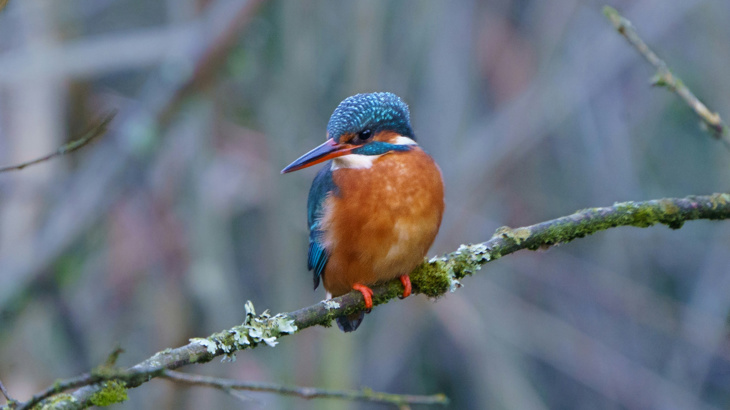
Kingfishers can be spotted along the river on Route 45. Credit: Amee Fairbank-Brown on Unsplash
Otters and bats – Birmingham, Route 5
Birmingham may not be the first place you think of when it comes to wildlife, but you’d be surprised by what species live here in the heart of the city.
Route 5 takes you along the River Rae, where you can find dipper birds, which are more usually associated with rural areas.
It’s always worth stopping to check any weirs and shallow parts for a distinctive dipper as it dives in and out of the river.
Also along the river, you may spot otter dung near bridges – a clue that otters live here. If you want to see the otters, dawn or dusk is a good time as they're mostly nocturnal creatures.
But going out at night may be worth it as bats also live in the area.
The small pipistrelle microbats can be seen flitting through vegetation, and as you pass through Cannon Hill Park, you may spot Daubenton’s bats zooming over the water, catching midges, and sometimes even scooping insects off the water surface with their tails as they fly by.
Water voles – Lawrence Weston Road, Route 41
Lawrence Weston Road links Bristol to Cheltenham and beyond.
While this area may seem like another industrial area from the outside, it's home to many wildlife.
The most exciting are water voles that live in the drainage ditches next to the path.
Water voles have undergone one of the biggest declines of any wild mammal in Britain. The population has fallen by almost 90% over the last 40 years thanks to habitat loss, damage, and predation by the invasive American mink.
So it’s a rare treat to have such a large population of them in one place.
Water voles are secretive animals, and as a prey species, they are difficult to spot.
They’re famous for the characteristic ‘plop’ they make as they enter the water, so keep an ear out.
If you spend some time on the path, you are likely to spot the slow worms and grass snakes living in the path’s grass verges.
Take care not to step or ride over them, as they are beautiful creatures but quite slow before they warm up or on a colder day.
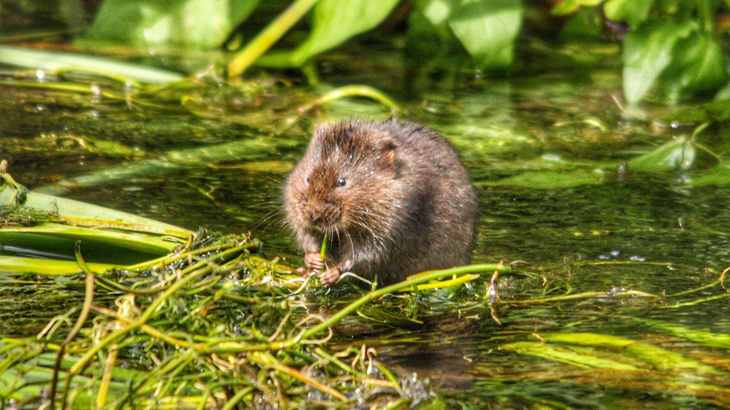
Water voles are famous for the characteristic ‘plop’ they make as they enter the water. Credit: Jonathan Ridley on Unsplash
Nightingales – The Wivenhoe Trail, Route 51
What’s more beautiful than the song of a nightingale?
Head over to the Wivenhoe trail in Essex or Route 4 in Theale to hear it for yourself.
Nightingales are known for having the most beautiful song out of all the birds in the UK and can produce over 1000 different sounds. Compared to a blackbird at only 100, they’re quite the maestro.
Sadly, it’s been estimated that this species has declined by 90% in the last 50 years, largely due to habitat loss and climate change. Nightingales migrate, so they’re only on our shores in the spring and summer.
Fun fact, they’re one of the only songbirds you can hear at night. Males are thought to sing to try and attract females as they fly over on their migration.
Nightingales are difficult to spot because they are quite secretive and have brown feathers, but if you hear one sing, you won’t think they are drab at all.
Glow worms and newts – Kennington Meadows, Route 4 and 5
During the summer at Kennington Meadows in Oxford, you’ll be greeted by quite a magical sight.
In June and July, along this route you may spot some strange greeny-orange lights in the vegetation. This light is from female glow worms, lighting up to attract a mate.
Did you know that glow worms are actually beetles rather than worms? However, the females don’t have wings, so they do look a bit like larvae.
The female glow worms climb up plant stems, making their glow visible to the males. Interestingly, their larvae and eggs can also emit light.
If you’re out on the Network at night, the other species to try and spot is the great crested newt, which may be in the pond close to the path. If you shine a torch into the water, a whole world of aquatic life can be seen.
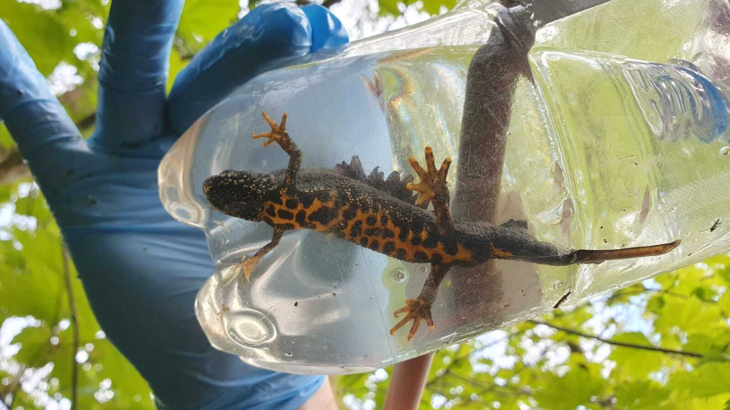
A great crested newt being surveying, under licence, by ecologists using a bottle trap. Credit: Carys Peotto
Bats and hazel dormice – Fordwich Way, Route 1
If nocturnal rides are your thing, then Fordwich Way in East Kent is the place for you.
Sustrans undertook some bat activity and static detector surveys in 2021 and recorded at least eight species of bat flying over the route.
The most frequently recorded species was soprano pipistrelle which accounted for over 50% of the recordings, so you may be lucky enough to see bats flitting past you if out on the path at dusk.
Another rare sight that can be found along this route is hazel dormice. If there were a cutest British animal competition, the hazel dormice would probably win.
They live in the woodland along Fordwich Way and have golden-brown fur, large black eyes, long whiskers, and a furry tail.
Hazel dormice used to be widespread across Britain.
Nowadays, due to climate change and habitat loss/fragmentation, the population has declined dramatically.
There are now 70% fewer hazel dormice than there were in 2000, and they’re only found in southern England and Wales.
Hazel dormice hibernate for about five months over the winter, but when they are active, they stay in the tree and shrub canopy, making them harder to spot.
Flora, rare geese and seals – Northumberland Coast Path, Route 1
Next time you’re on the Northumberland Coast Path, it’s worth popping over to the Beal to Lindisfarne.
From here, you can cross the paved causeway to the beautiful and tranquil tidal island of Lindisfarne, also known as Holy Island.
The island can only be reached at low tide, so check the tide tables carefully before crossing.
The island forms part of the Lindisfarne National Nature Reserve, a mosaic of internationally important coastal habitats.
In total, there are 3500 hectares of sand dunes, tidal mudflats, salt marshes, and rocky shores to explore - home to a fascinating and fabulous variety of wildlife.
There are some wonderful flora and fauna to see, such as summer dune flowers and several important national plants.
These include a whopping eleven species of orchid. Among them is the Lindisfarne helleborine, which can only be found on Holy Island, you can’t get much rarer than that.
The nature reserve also gets a huge number of birds visiting every autumn and winter. In fact, the reserve is the largest wintering site in Britain for the rare light-bellied Brent geese.
And make sure to keep an eye out for the grey and harbour seals basking on the sandbars – there’s always something different to see on the North Sea coast.

Grey seals can be found along the Northumberland Coast Path (Route 1). Credit: Diana Parkhouse on Unsplash







